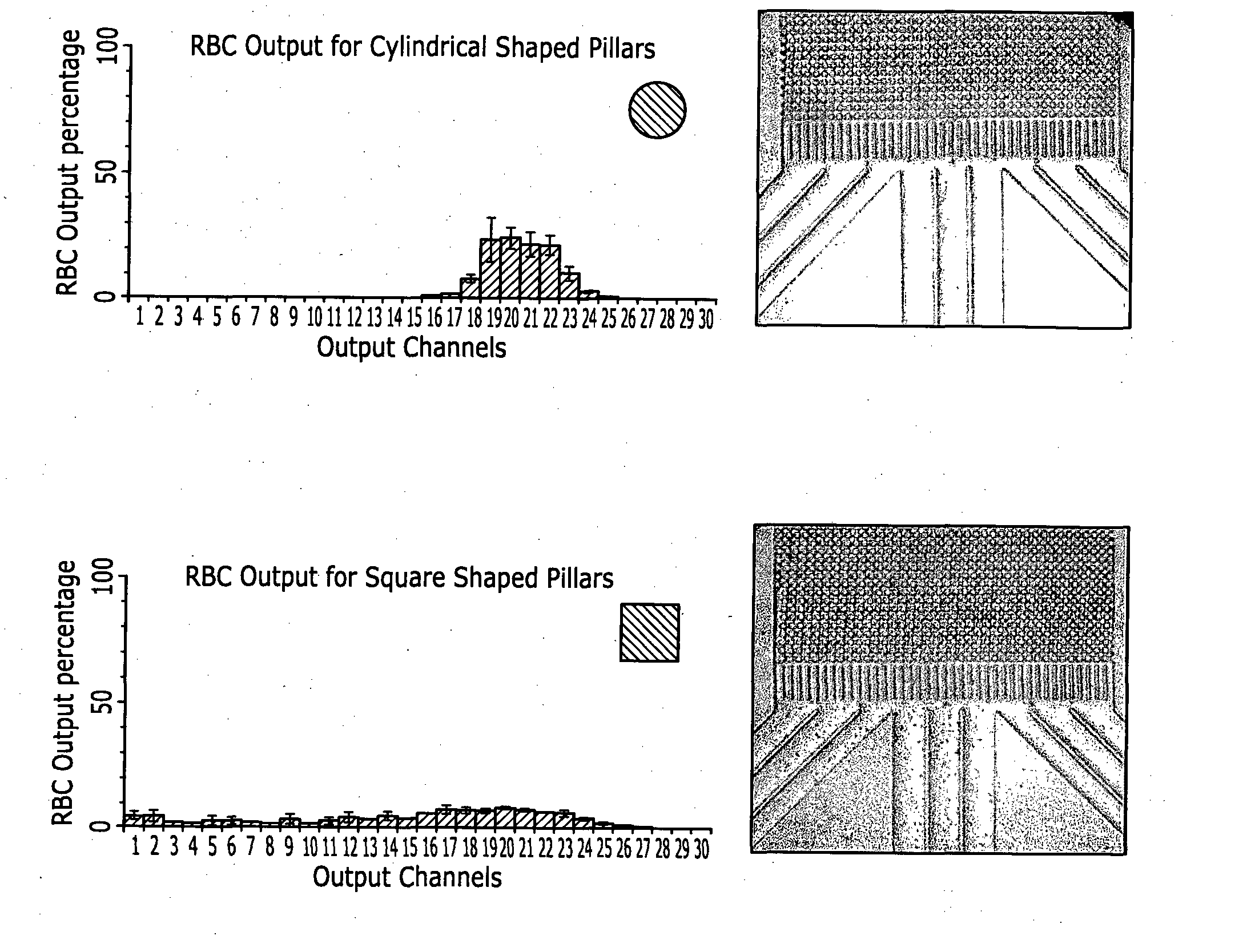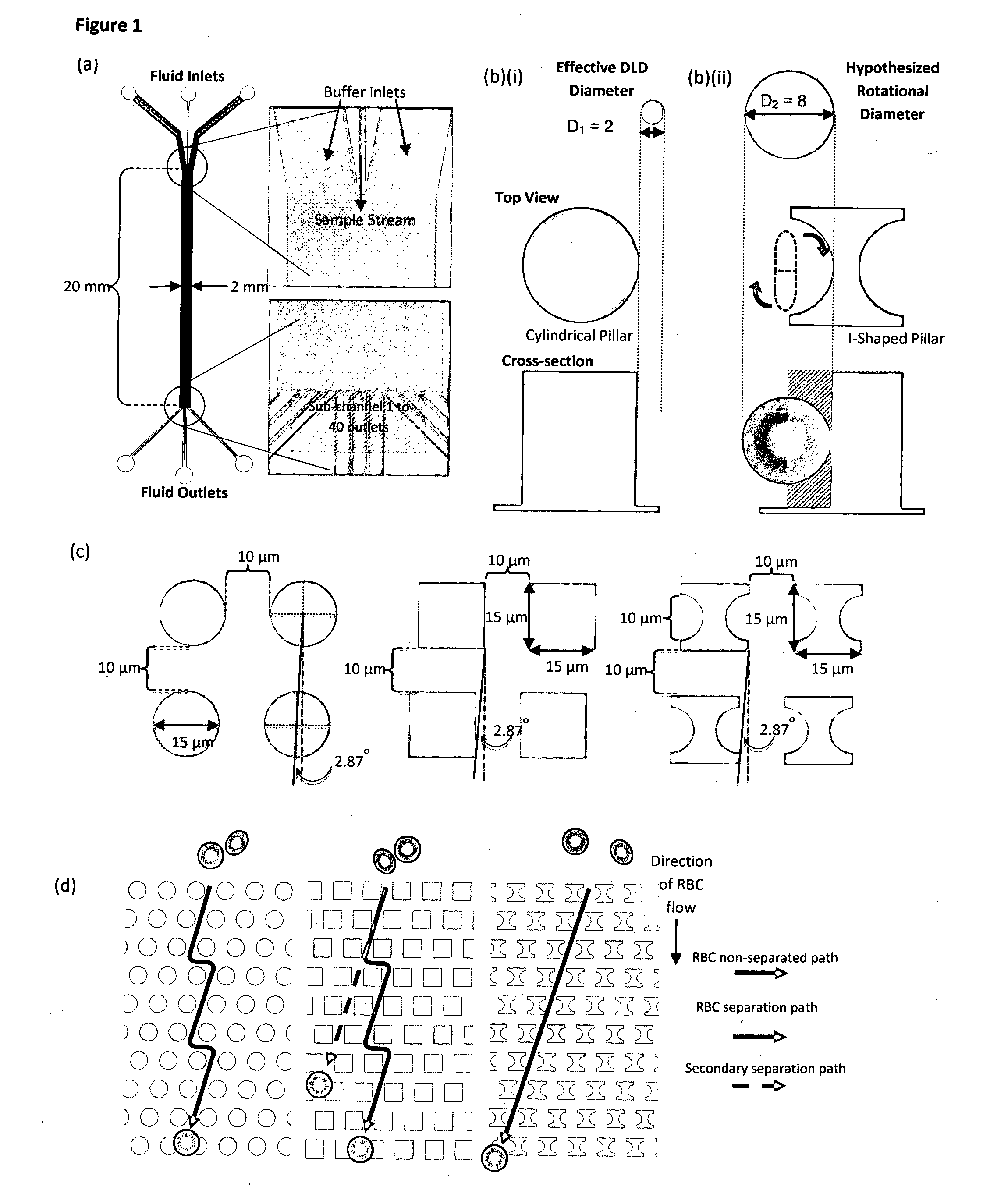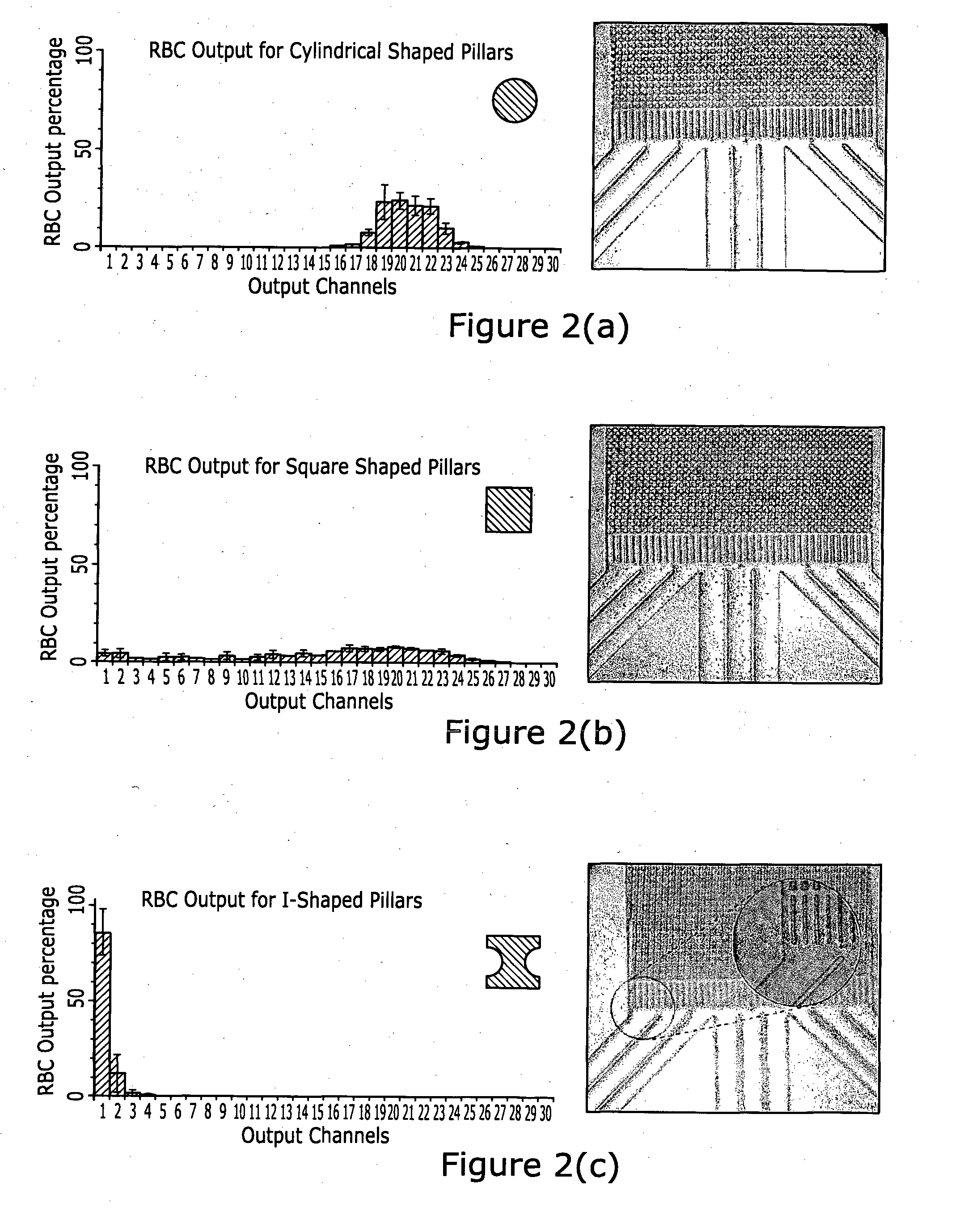Microdevices for separation of non-spherical particles and applications thereof
a technology of micro-devices and non-spherical particles, applied in the field of micro-devices for separation of non-spherical particles and applications thereof, can solve the problems of complicated separation process that is ideally designed, cumbersome bench-top equipment, and traditional process of separating these biological entities or bioparticles, and achieve the effect of rapid detection and analysis of water samples
- Summary
- Abstract
- Description
- Claims
- Application Information
AI Technical Summary
Benefits of technology
Problems solved by technology
Method used
Image
Examples
Embodiment Construction
Having Regard to RBC Monitoring
[0090]Device Fabrication The silicon microfluidic device was fabricated on a silicon wafer using standard lithographic techniques. A SUSS MA8 lithography machine was used to transfer the device design in FIG. 1(a) from a glass mask to a positive photo resist (AZ5214E) coated on the silicon surface. The wafer was placed in an Oxford 180 deep reactive ion etching machine to plasma etch the channels for the device. Piranha solution was used to remove any remaining photoresist on the wafer surface. A thin sheet of poly-dimethylsiloxane (PDMS) was fabricated and the inlet and outlet holes were punched before the PDMS was bonded over the silicon device using oxygen plasma. The device design shown in FIG. 1(a) comprises three inlet channels, a DLD main channel of 2 cm long and three outlet channels divided into 40 sub-channels for characterization of device separation efficiency. There are a total of three DLD designs as shown in FIG. 1(c), namely circle / cyli...
PUM
| Property | Measurement | Unit |
|---|---|---|
| Shape | aaaaa | aaaaa |
Abstract
Description
Claims
Application Information
 Login to View More
Login to View More - R&D
- Intellectual Property
- Life Sciences
- Materials
- Tech Scout
- Unparalleled Data Quality
- Higher Quality Content
- 60% Fewer Hallucinations
Browse by: Latest US Patents, China's latest patents, Technical Efficacy Thesaurus, Application Domain, Technology Topic, Popular Technical Reports.
© 2025 PatSnap. All rights reserved.Legal|Privacy policy|Modern Slavery Act Transparency Statement|Sitemap|About US| Contact US: help@patsnap.com



